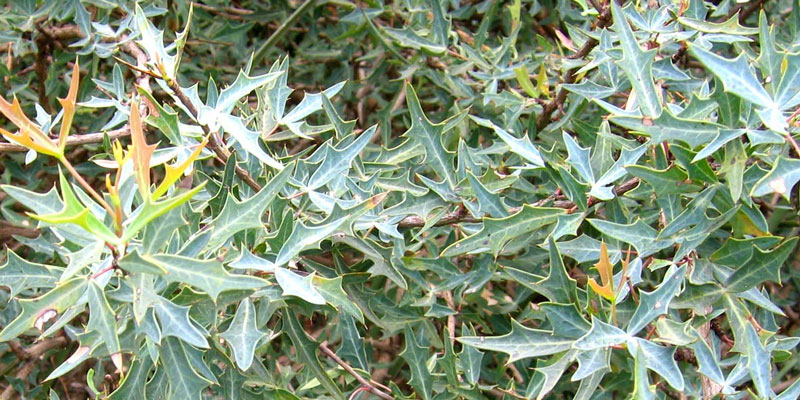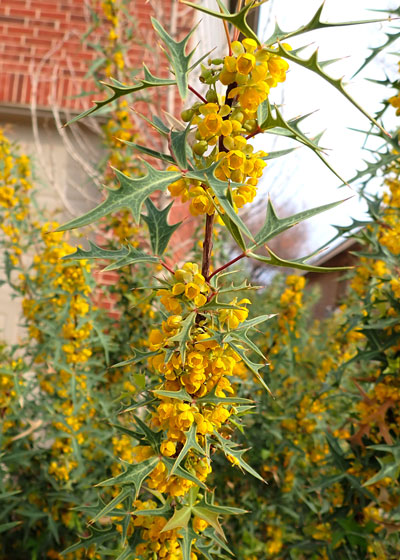Agarita is a native to love – by Steve Huddleston

Agarita is a beautiful evergreen shrub from the western half of Texas where it grows in open woods and on rocky slopes. You’ll find it in well-drained loam, clay, caliche, and limestone soils. It seems satisfied with just about any set of bright conditions.
Agarita has rigid, spreading branches that develop into a dense shrub to 3 to 6 ft. tall and wide, although it can get as tall as 10 ft. under favorable conditions. In nature, quail and small mammals use the plant for cover.
If you’re interested in using agaritas in your landscape, set them into well-draining soil in sun or light shade. When planting them in masses space the plants 3 to 6 ft. apart.

Their first two years in your landscape, water your new agaritas weekly from late spring through early fall. After that they will probably be able to survive on annual rainfall. They have no serious insect or disease problems, and deer leave them alone. Prune only as needed to remove an erratic branch here or there. Do not try to train agaritas into formal shapes.
Since agarita has very spiny foliage it’s best to use it away from high-traffic areas. It combines well with other native Texas xeriphytic plants such as red yucca, white-flowering yucca, zexmenia, autumn sage, Lindheimer’s muhly grass, and Mexican feather grass.
Here’s what you’ll want to know…
• Common name: Agarita
• Botanical name: Berberis trifoliata
• Plant Family: Berberidaceae (Barberry family), which also includes barberries, mahonias, and nandinas
• Native range: Western half of Texas, also New Mexico, Arizona, and northern Mexico
• Hardiness Zones: U.S.D.A. Zones 7-9

• Flowers: Bright yellow, February and March
• Fruit: Showy, small red, ripens April to June. Makes delicious jelly. Favorite food of birds as well.
• Leaf character: Blue-gray, three-pointed with very sharp spines. Evergreen.
• Stems: Visible and attractive, proudly displaying flowers, fruit, and foliage. Internal wood is vivid yellow.

